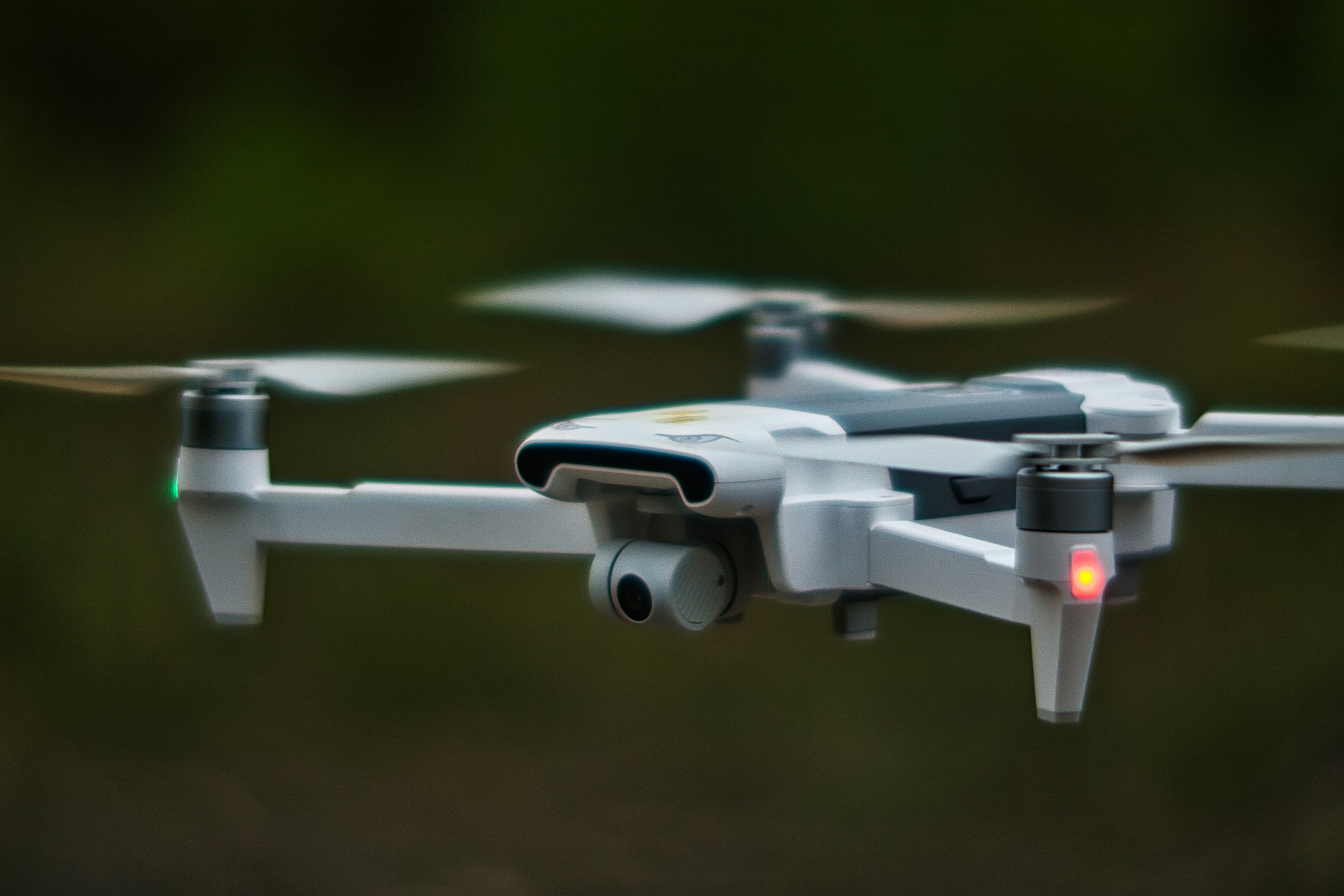
BAE Systems UAV Jobs: Pioneering the Next Generation of Defence and Aerial Innovation
In an age where unmanned aerial vehicles (UAVs) are reshaping both commercial and defence industries, BAE Systems stands out as one of the foremost companies driving UAV technology forward. With a deep-rooted heritage in aerospace, security, and advanced engineering, BAE Systems remains at the forefront of designing, building, and integrating state-of-the-art autonomous aircraft and related systems for governments, militaries, and commercial partners around the globe.
For UAV professionals—whether you’re an engineer, software developer, flight test specialist, or systems architect—BAE Systems offers a unique, high-impact environment. The company’s work in UAVs spans from large-scale autonomous aircraft for defence applications to sophisticated sensor suites, communications technologies, and advanced simulation systems that push the boundaries of aerial innovation. This article provides an overview of BAE Systems’ UAV activities, the types of roles available, the skills and experience the company seeks, likely salary ranges, and how to pursue a UAV career with one of the world’s most influential aerospace and defence firms.
1. Why BAE Systems for UAVs?
BAE Systems is a global aerospace and defence corporation with deep expertise in advanced engineering and technology. The company traces its origins to the early days of aviation and has grown into a leading force in fighter aircraft, naval ships, cybersecurity, and next-generation military systems. UAVs, or remotely/autonomously piloted vehicles, represent a strategic priority for BAE, reflecting the rising demand for unmanned platforms across multiple sectors.
Key reasons to consider BAE Systems for UAV jobs:
Heritage in Defence and Aerospace
BAE Systems has decades of experience in high-performance aircraft, mission systems, and flight-critical components, giving the firm a firm technical foundation for complex UAV programmes.
Research and Development Focus
BAE invests significantly in R&D, exploring cutting-edge aerodynamics, AI-powered autonomy, stealth technologies, and beyond. UAV professionals at BAE often engage in advanced, sometimes classified, engineering challenges.
Breadth of Projects
From small UAVs for surveillance to large-scale autonomous aircraft for defence, BAE covers a wide range of unmanned systems, offering diverse opportunities for engineers and specialists.
Global Impact
As a major supplier to the UK and other allied governments, BAE Systems’ UAV projects can directly influence national security, shaping the future of aerial combat, border control, and humanitarian operations.
Career Development
BAE promotes continuous learning, invests in staff training, and enables rotational assignments across departments or even countries. Employees can cultivate deep technical knowledge and leadership skills.
By working on UAV technology within BAE, professionals can immerse themselves in critical, large-scale projects that blend innovation with mission relevance—making a real impact on how unmanned aerial systems evolve in the coming years.
2. BAE Systems’ UAV Activities
BAE Systems’ UAV initiatives address both current and future platforms, ranging from advanced concept demonstrators to fully operational unmanned aircraft for the defence market.
2.1 Current and Emerging UAV Platforms
Taranis (Advanced Unmanned Combat Aircraft)A prototype stealth UAV designed to test autonomy, stealth technology, and advanced flight controls. Taranis has provided crucial insights into next-gen unmanned combat systems.
PHASA-35 (High-Altitude, Long-Endurance Vehicle)A solar-electric UAV concept aimed at continuous flight for extended durations, useful for surveillance, environmental monitoring, and communication relays.
Storm Shadow Integration and UCAV CollaborationBAE has participated in collaborative UCAV (Unmanned Combat Aerial Vehicle) projects with partners across Europe, including advanced concept aerodynamics, mission systems, and weapons integration.
Unmanned Systems R&DBeyond high-profile demonstrators, BAE invests in exploring miniaturised UAV designs, advanced sensor payloads, swarm capabilities, and AI-driven mission planning for future combat air systems.
2.2 Focus on Defence and Security
BAE Systems is primarily known for its defence-oriented approach, meaning UAV projects often revolve around intelligence, surveillance, reconnaissance (ISR), target acquisition, and combat. However, BAE’s expertise in secure communications, sensor fusion, and advanced propulsion also has potential crossover into civil or dual-use UAV systems.
2.3 Partnerships and Collaboration
BAE frequently partners with universities, government agencies, smaller UAV developers, and international allies. For instance, it may provide UAV mission systems to prime contractors, or integrate BAE-designed unmanned solutions into allied forces’ operational frameworks. These partnerships expand the range of potential roles, from embedded software design to flight test engineering.
3. Why Work at BAE Systems in UAV Roles?
BAE Systems has a reputation for enabling technically challenging, large-scale programmes in secure, cutting-edge environments. UAV professionals can expect:
High-Impact Missions
Work on UAVs that can influence defence capabilities, humanitarian relief efforts, or border security—contributing to real-world operational outcomes.
Advanced Technology
Projects often involve stealth composites, sensor fusion, AI autonomy, advanced manufacturing, digital twinning, and more.
Professional Growth and Mentorship
BAE invests in formal and informal learning, with extensive mentorship programmes, leadership pathways, and continuing professional development.
Global Presence
With sites around the UK and internationally, employees can find roles in Farnborough, Samlesbury, Warton, and other aerospace hubs, potentially accessing secondments abroad.
Ethos of Collaboration and Innovation
Multidisciplinary teams, from aeronautical engineers to AI researchers, emphasise synergy and cross-functional problem-solving. The scale of these programmes fosters a sense of pride and camaraderie.
For UAV specialists determined to push the boundaries of unmanned flight in a defence context, BAE Systems offers robust resources, significant budgets, and a thorough approach to engineering rigour.
4. Types of UAV Jobs at BAE Systems
4.1 UAV Systems Engineer
Focus: Overseeing the design, integration, and testing of the entire UAV architecture—structural, propulsion, sensors, communications, control systems, and ground stations.Key Duties:
Define system requirements, technical specifications, performance metrics.
Coordinate cross-disciplinary teams (mechanical, electrical, software) to ensure design coherence.
Conduct system-level testing, troubleshoot integration challenges, and ensure compliance with military standards.Skills:
Knowledge of aeronautics, embedded software, flight mechanics, sensor fusion.
Familiarity with modelling tools (MATLAB/Simulink), robust documentation, DO-178/DO-254, or other safety standards.
4.2 UAV Flight Control / Autonomy Specialist
Focus: Developing algorithms for vehicle guidance, navigation, and control (GNC), including AI or machine learning components for autonomous decision-making.Key Duties:
Implement flight control laws, autonomy algorithms, path planning.
Leverage sensor data (GPS, INS, cameras, LIDAR) to maintain stable flight and mission objectives.
Run simulation environments, hardware-in-the-loop test rigs.Skills:
Control theory, embedded C/C++, or Python.
Real-time operating systems, advanced robotics frameworks, AI/ML knowledge for onboard intelligence.
4.3 UAV Software Engineer (Embedded / Systems)
Focus: Low-level embedded coding, real-time operating systems, or higher-level mission software that runs on the UAV or the ground control station.Key Duties:
Build robust, secure, and efficient software solutions, typically in C++, Ada, or modern embedded languages.
Integrate sensors, implement security protocols, ensure safety-critical constraints are met.
Undertake debugging, simulation, and code optimisation for resource-limited platforms.Skills:
Proficiency in real-time and embedded systems development, concurrency control, network protocols, safety-critical coding standards.
Experience with GPGPU computing or AI frameworks can be beneficial.
4.4 UAV Aerodynamics / Structures Engineer
Focus: Designing UAV airframes, optimising aerodynamics, and ensuring structural integrity under various mission conditions.Key Duties:
Use CFD (computational fluid dynamics) for aerodynamic analysis.
Select lightweight composite materials, apply stress analysis, ensure stealth aspects are considered.
Collaborate with manufacturing teams on prototype builds, flight tests, and iterative refinements.Skills:
Background in mechanical/aerospace engineering, advanced simulation tools (ANSYS, NASTRAN, OpenFOAM).
Familiarity with heat transfer, stealth shaping, wind tunnel testing.
4.5 UAV Test and Integration Engineer
Focus: Managing the UAV test lifecycle—lab, ground, and flight testing to validate system functionality, safety, and performance.Key Duties:
Develop test plans, gather instrumentation data, lead flight trials.
Analyse flight logs, interpret telemetry, and propose design improvements.
Ensure compliance with airworthiness certifications and MoD guidelines.Skills:
Experience in flight test instrumentation, safety procedures, data analysis software.
Knowledge of DO-160, airspace regulations, plus scenario simulation.
4.6 Cybersecurity Specialist (UAV Systems)
Focus: Ensuring the UAV’s communications, control links, and data are protected against cyber threats, jamming, or interception.Key Duties:
Harden networks and encryption for UAV data links.
Conduct penetration testing, vulnerability scanning, threat modelling of onboard software.
Collaborate with mission planners to address emerging tactics from adversarial jammers or hackers.Skills:
Experience in cryptography, secure communications, Linux kernel security, or radio frequency protective measures.
Knowledge of defence standards for cyber compliance (e.g., NIST, ISO 27001).
4.7 Project Manager / Programme Lead
Focus: Overseeing UAV development programmes, ensuring timelines, budget adherence, stakeholder alignment, and technical progress.Key Duties:
Coordinating cross-functional teams, from R&D to procurement.
Managing risk, reporting on milestones, controlling documentation for MoD or other governmental bodies.
Liaising with customers, shaping deliverables, adjusting scope where needed.Skills:
Strong leadership, familiarity with aerospace programme lifecycles, and contract management.
Formal project management certifications (PRINCE2, PMP) beneficial.
5. Skills & Qualifications Valued by BAE Systems
While specifics differ by role, here’s a general snapshot:
Academic Background
Typically BSc/MSc in Aerospace, Mechanical, Electrical Engineering, Computer Science, or related STEM discipline. A PhD can be advantageous for specialised R&D roles.
Security Clearance
Many BAE UAV roles, especially MoD-facing, may require the ability to gain UK security clearance. Nationality, background checks, and residency often factor into clearance eligibility.
Engineering Rigor
Ability to comply with safety-critical standards, thorough design documentation, systematic testing approaches.
Teamwork & Communication
UAV engineers frequently collaborate with multi-disciplinary teams. Clear communication, documentation, and the willingness to solve cross-functional problems are essential.
Modern Tools & Methodologies
Familiarity with CAD/CAE software, data management in PLM systems, agile/scrum environments, or DevOps for embedded development pipelines can be useful.
Adaptability
BAE invests in advanced or classified prototypes; staff should embrace iterative design, pivoting R&D directions, and learning new frameworks quickly.
Passion for Aerospace & Defence
A genuine interest in UAV technology, flight dynamics, robotics, or defence missions resonates well in interviews and fosters strong team alignment.
6. Salary Expectations for UAV Jobs at BAE Systems
BAE Systems offers competitive packages, often including a base salary, performance bonuses, pension contributions, and other perks (health insurance, relocation support). Exact figures vary by role, seniority, and clearance level, but approximate UK-based ranges might be:
Graduate / Entry-Level:
£30,000 – £40,000 base salary.
Mid-Level (3–5 years):
£40,000 – £60,000 base, possibly higher for in-demand specialities like autonomy algorithms or cybersecurity.
Senior Engineer (5–10 years):
£60,000 – £80,000 base, plus larger bonuses, potential for leadership responsibilities.
Principal / Lead Roles:
£80,000 – £100,000+ base, with additional performance incentives, especially if managing large programmes.
Additional benefits (remote/flexible work, private healthcare, training budget, sabbatical options) may further enhance total compensation.
7. How to Apply for UAV Jobs at BAE Systems
7.1 BAE Careers Portal
Visit the BAE Systems UK Careers site, searching for keywords like “UAV,” “Unmanned,” “Autonomy,” or “Aerospace Engineer.” Refine by location (e.g., Warton, Samlesbury, Farnborough) to discover relevant listings.
7.2 Graduate Schemes and Apprenticeships
BAE offers well-regarded graduate programmes and apprenticeships. If you’re early in your career, these structured rotations can expose you to design offices, flight test operations, or manufacturing lines for UAV systems. The scheme often includes a mix of on-the-job learning and formal training.
7.3 Technical Interviews and Security Checks
Applicants undergo multiple interview stages, typically including:
Initial Screening: HR or technical phone chat about your background, interest in BAE, and basic knowledge.
Technical Panel: Could cover UAV fundamentals (aerodynamics, flight control, software engineering, or system design). You may need to present a project portfolio or solve scenario-based problems.
Behavioural / Culture Fit: Ensuring alignment with BAE’s collaborative values, professional integrity, and willingness to handle secure projects.
Security Vetting: If the role involves sensitive data or MoD contracts, you may need to pass government clearance, which examines residency, criminal record, and references.
7.4 Emphasise Engineering Depth and Team Spirit
Throughout the application process, emphasise:
Project experiences: Discuss your role in UAV prototypes, flight testing, or aerospace software solutions. Show you can handle rigorous design and testing cycles.
Team achievements: BAE fosters group-based problem solving; highlight collaborations that overcame big challenges.
Adaptability and Continuous Learning: UAV technology evolves rapidly, so willingness to adopt new tools, incorporate novel flight algorithms, or approach new design challenges is key.
8. The Future of UAV at BAE Systems
BAE Systems’ UAV roadmap is intertwined with emerging aerospace technologies and defence strategies. Some anticipated focus areas:
Combat Air Systems: The Tempest programme (a potential sixth-generation fighter concept) may include sophisticated UAV “loyal wingmen” or swarming drones integrated alongside manned aircraft.
Low-Observable Platforms: Stealth shaping, advanced materials for radar evasion, and integrated sensors continue to drive R&D in unmanned combat.
Autonomous Swarming: Leveraging AI for coordinated UAV operations, enabling multiple drones to share data, form mesh networks, and execute missions collaboratively.
AI-Driven Mission Planning: Enhanced autonomy for real-time decision-making, threat identification, and dynamic route management with minimal human oversight.
Urban Air Mobility: While BAE’s focus is primarily defence, the push for eVTOL or advanced air taxi concepts may foster cross-pollination of technologies (propulsion, safety systems, autonomy).
For engineers and specialists joining BAE, these directions imply ongoing demand for advanced avionics, sensor fusion, autonomy software, HPC simulation, and robust flight test expertise—ensuring a steady stream of UAV job opportunities in the years ahead.
9. Conclusion: Elevate Your UAV Career at BAE Systems
BAE Systems stands as a premier global aerospace and defence company, and its growing portfolio of unmanned aerial vehicles represents some of the most technically ambitious programmes in the sector. If you’re passionate about designing, building, or operating UAVs that push technology boundaries and contribute to national security, BAE may well be your ideal workplace.
By joining BAE’s UAV teams, you can:
Experience large-scale defence projects, from concept to operational deployment.
Collaborate with highly skilled colleagues in aeronautics, software, and system integration.
Access robust training and career progression, moving between R&D labs, flight test environments, or programme management.
Shape the future of aerial warfare, surveillance, and advanced autonomous systems, enabling the next leap in aviation technology.
Whether you’re a graduate engineer or a seasoned professional, BAE Systems invites you to explore roles that combine the thrill of cutting-edge aerospace challenges with the responsibility of safeguarding lives and nations. Ready to apply? Check out www.uavjobs.co.uk for the latest UAV openings at BAE Systems and take the first step towards an exciting career shaping unmanned aviation’s future.


